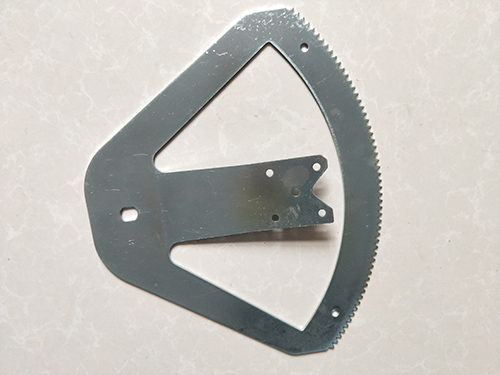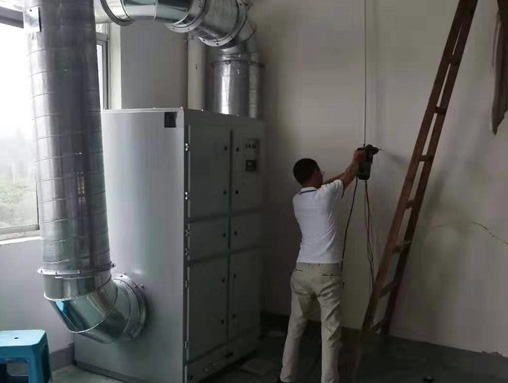Common defects and analysis in the forming process of automotive stamping parts
The automotive industry is one of the largest manufacturing industries in the world, and the demand for automobiles has increased with the development of the world economy, which requires the improvement of automotive manufacturing technology. In the components of automobiles, automotive hardware stamping parts; Occupying a large proportion, including car shells, internal reinforcement ribs, car chassis, engines, etc., the manufacturing of these stamped parts adopts stamping forming technology, and Fanjin stamping technology plays a very important role in the automotive manufacturing industry.
Common defects in the stamping process of rice gold
The stamping process mainly uses molds to bend, draw, bulge, stretch, and flange metal sheets, producing the required products. Due to the diversity and complexity of the sheet metal forming process, the material and processing control of stamped parts, as well as the design and manufacturing of molds, can all affect product quality. This is also the main reason why many defects are often produced in stamping and difficult to correct.
1. Crack
Cracking is one of the common defects in stamped parts, which can be divided into micro cracking and macro cracking. Microscopic tensile cracking refers to cracks in stamped parts that are difficult to distinguish with the naked eye; Macroscopic tensile cracking refers to visible fractures in stamped parts. Regardless of the type of tensile fracture, it is caused by excessive local tensile strain. It is feasible to reduce or even avoid tensile cracking for simple bent parts by accurately calculating the larger tensile strain at the bending position; For deep drawn parts, the above method is difficult to accurately calculate the forming condition of the material, so it cannot be predicted whether there will be tearing during the deep drawing process.
2. Thinning
Thinning of sheet metal is a common phenomenon in sheet metal forming (bending, deep drawing, bulging, etc.). From a usage perspective, for stamped parts, reducing the thickness of the sheet metal by 4% to 20% is not a problem, but excessive thinning can reduce the stiffness of the part and even cause cracking. Generally speaking, the thinner the sheet metal, the better the quality of the stamped parts.
3. Wrinkle
Wrinkle is a common and difficult defect in the deep forming of rice flour, which is caused by the accumulation of thin plates in the thickness direction due to excessive local compressive stress, opposite to tensile cracking. Metal stamping parts; When wrinkling occurs, the direction of the wrinkles is perpendicular to the compressive stress, but this does not necessarily mean that wrinkling is caused by compressive stress. There are various reasons for wrinkling during sheet metal stamping, which can be roughly divided into four types: compression force, shear force, uneven drawing force, and in-plane bending force. Although wrinkling does not weaken the strength and stiffness of parts like tearing, it affects the aesthetic appearance of deep drawn parts. If wrinkling occurs in an intermediate process, it may also affect the normal processing of the next process.
The mold surface (convex mold, concave mold fillet, forming surface shape, etc.) has a significant impact on part forming. Taking cylindrical deep drawing parts as an example, the function of concave die fillet is explained below. The appropriate size of the concave die fillet during the deep drawing process of cylindrical parts is a key factor in the success of deep drawing. Its main function is to control the flow rate and speed of the material. The value of the concave die fillet is related to the thickness of the material. When the material thickness is less than 1mm, the fillet radius should not be less than 5 times the material thickness; When the material thickness is between 1-2.5mm, the fillet radius should not be less than 4 times the material thickness; When the material thickness is greater than 2.5mm, it needs to be determined according to the specific situation. The corner radius is too small, which can easily cause tearing during the deep drawing process; If the fillet radius is too large, it is easy to wrinkle. When designing the fillet radius of a mold, the initial design is based on the calculation results and experience, and then the fillet radius is appropriately increased or decreased according to the flow of the material to control the forming process.
Metal stamping and stretching parts can be seen everywhere in our daily lives. Various problems may arise during mass production of metal stamping and stretching parts due to various reasons. Common problems and solutions in the production of metal stamping and stretching parts:
1. The shape and size of the metal stamping and stretching parts do not match
The main reason for the mismatch between the shape and size of metal stamping and stretching parts is due to springiness and inaccurate positioning. In addition to taking measures to reduce springback, the positioning of the blank should also be improved.
2. Surface scratches on metal stamping and stretching parts
Surface scratches on metal stamping and stretching parts are caused by improper material selection, low heat treatment hardness, poor smoothness, wear of concave die corners, poor surface quality of bent blanks, excessive material thickness, unreasonable process selection, lack of lubrication, and other reasons.
3. Bending cracks in metal stamping and stretching parts
(1) When the angle between the bending curve and the rolling grain direction of the sheet metal does not meet the specified layout, and when bending in a one-way V-shape, the bending curve should be perpendicular to the rolling grain direction; When bending in both directions, the bending curve should be at a 45 degree angle to the rolling direction.
(2) Poor plasticity of the stretching material.
(3) The bending radius is too small and the pickling quality is poor.
(4) Insufficient lubrication - high friction.
(5) Wear of convex concave die fillet radius or too small gap - increased feeding resistance.
(6) Poor quality of cutting and punching sections of stretching parts - burrs and cracks.
(7) Serious deviation in material thickness and size - difficulty in feeding
terms of settlement:
1. The shape of the stretching and forming process for automotive stamping parts should be as simple and symmetrical as possible, and should be formed in one deep drawing as much as possible;
2. For parts that require multiple stretches, under the premise of surface quality, there should be traces that can occur during the stretching process on both the inner and outer surfaces;
3. Under the premise of installation requirements, the response should be to stretch the slope of the side wall of the component;
4. The spacing from the hole edge on the bottom or flange of the stretching part to the side wall should be appropriate;
5. The bottom and wall of the stretching part, the flange and wall, and the corner radius of the rectangular part should be appropriate;
6. The scale marking of metal stamping and stretching parts cannot indicate the internal and external dimensions together.







